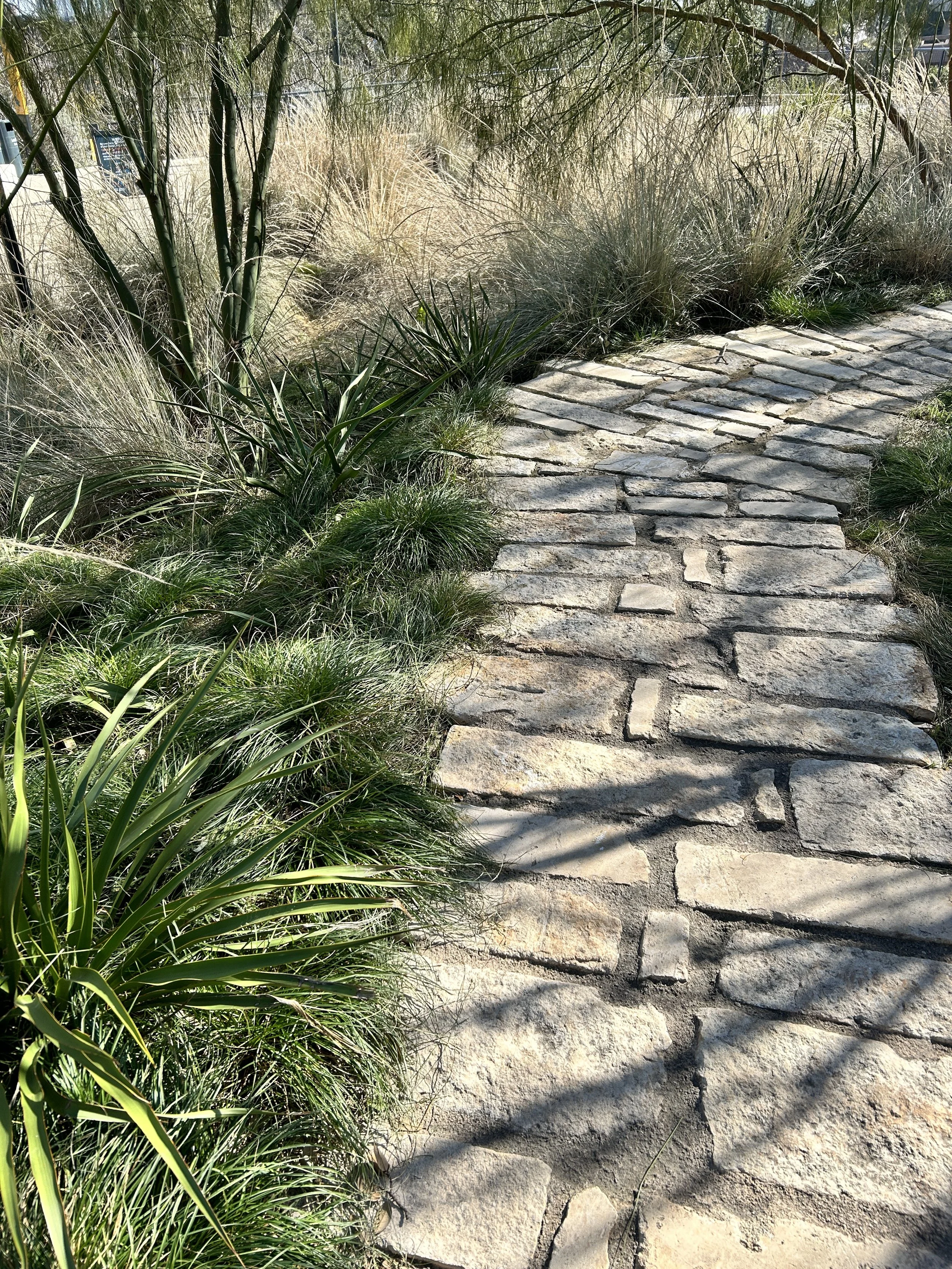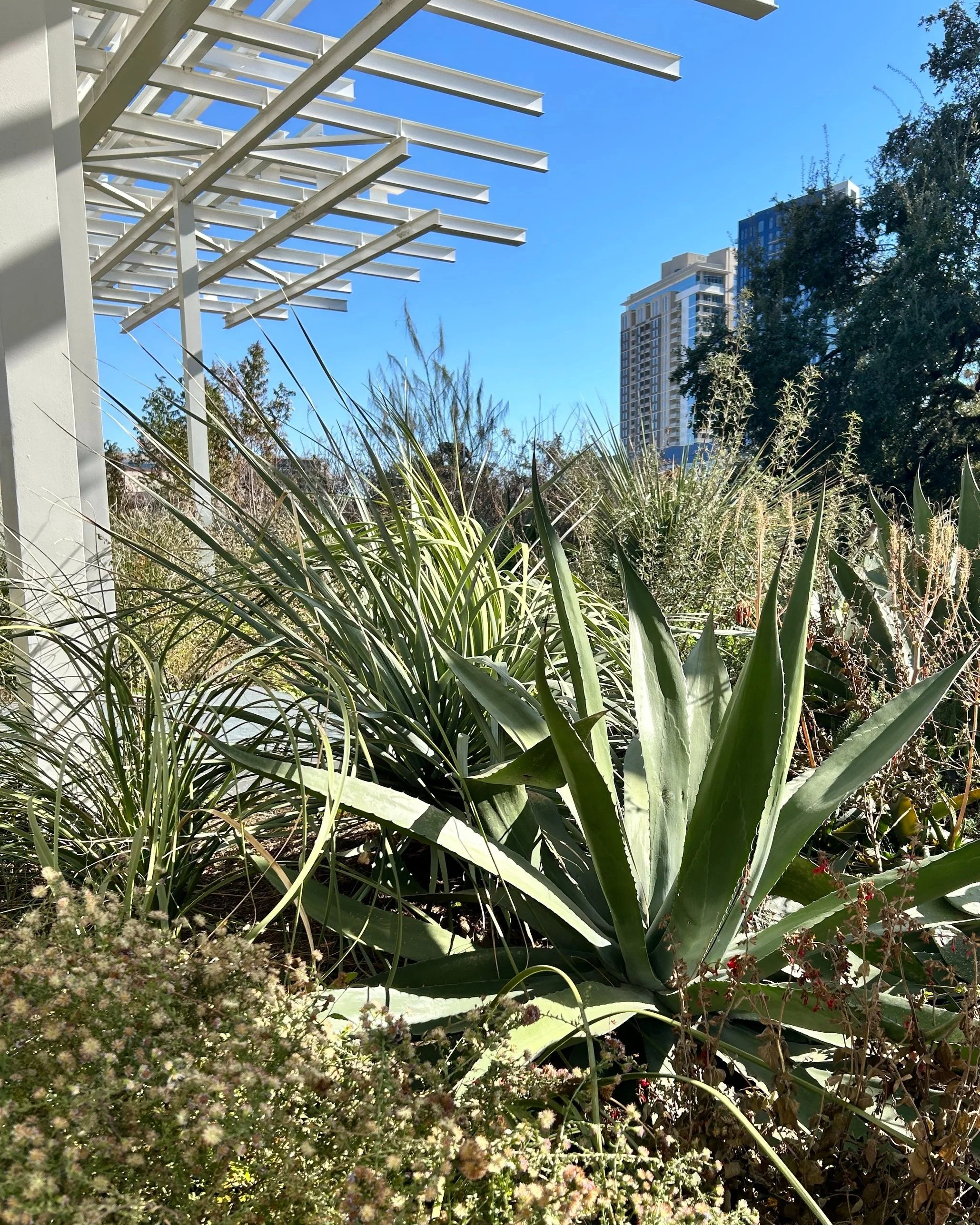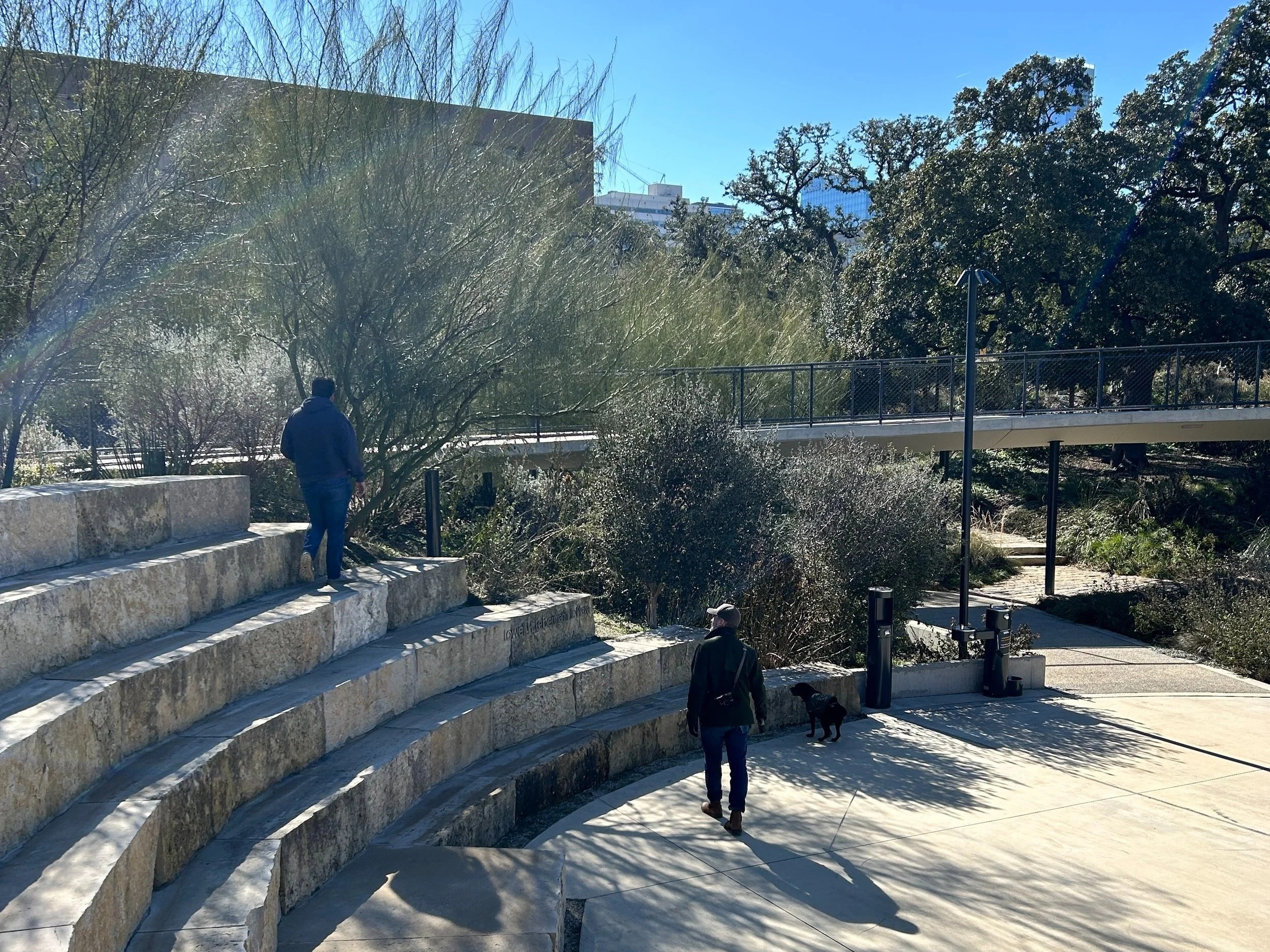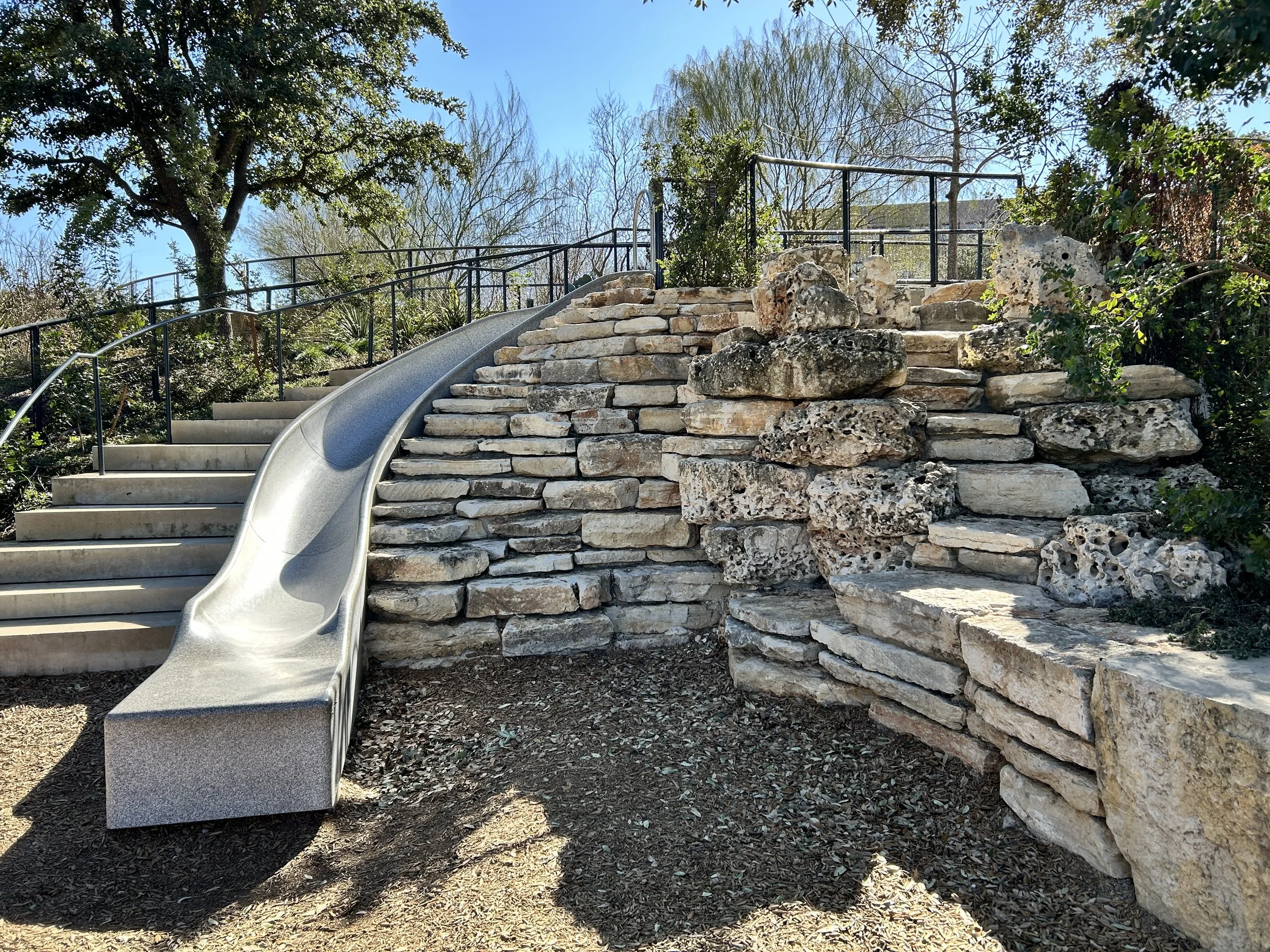An Afternoon at Waterloo Park, Part 2
This is part 2 of our blog series describing our team field trip to Waterloo Park in downtown Austin, TX. If you haven’t read Part 1 yet, please do so here!
Moody Amphitheater at Waterloo Park
The Plants!
One of my favorite times of year in the garden is winter, believe it or not. As a native east-coaster, I love the structure and muted colors that plants offer in the winter landscape. Even here in Austin, where there’s no snow (hopefully!), gardens take on an entirely different look in the winter months. I love to see how they provide food and shelter for birds and animals as they rest after a hard year of growth in our heat and drought. And as a bonus, it’s often an ideal time to be outside exploring nature, because the weather can be perfect this time of year.
A layered winter shade garden
As we explored the numerous winding pathways of this beautiful park, we loved seeing the different flower beds from different angles and perspectives. We really felt like we were lost in nature, even though we were right in the city!
Mixed beds of trees, evergreens, and perennials filled every space. Left to their own devices, they draped onto the limestone block paths and crawled around each other. The result is nature - but elevated. It was fun to see which plants stand out in the landscape at this time of year and will fade into the background in spring or fall.
Muhly grass, sedge grass, palo verde and yucca - a perfect combination
As we wandered from the more naturalistic spaces to more formal plantings around the amphitheater and other buildings, the plantings became slightly more structured but never lost their natural feeling. Mixed vines covered walls and railings, blending the buildings in with the gardens.
Agaves and prickly pear add structure to the softer grass and perennial plantings
The Buildings
In the midst of all of this is the beautiful Waterloo Amphitheater, which is constructed with the intention of holding major concerts, smaller events and gatherings, weekend picnics, and anything in between.
A smaller terraced limestone amphitheater is a perfect place to have lunch or climb up to get a closer look at the ring of Retama trees that surround it.
Near the main amphitheater, two enormous heritage oaks are supported by awe-inspiring metal structures that will help them thrive for many years to come. A deck underneath is a great place to sit and read a book or gather with friends.
Rick, David and Charlie the Dog exploring the terraced limestone seating area
The guys checking out this gorgeous tree support
We couldn’t resist the playground, filled with creative and unique play structures, which fits right into the park’s aesthetic. The design of the play structures mimic natural elements: giant blades of grass, a log jam climbing structure, and a granite slide set into a limestone hillside.
The slide!
If you’d like to donate to the Waterloo Greenway Conservancy, click here!
Takeaway
Since we live in a warmer climate, we tend to focus on enjoying our gardens in the longer spring and fall seasons. They hold less importance for outdoor enjoyment in the summer and winter months, where the weather is variable and is becoming increasingly harsh.
On top of that, many maintenance crews are eager to cut back the grasses and prune up the plants in late fall, removing their fruits and seeds, the dead leaves and flowers that birds collect or hide behind, reducing our gardens to skeletons of their former selves.
When we design gardens, we think about all of the seasons. We think about how the garden will change over time. We wonder how we can make sure we’re creating something that will be interesting and beautiful all year. We try to incorporate plants that bring something of interest to the garden at different times of year, so you always have something new and interesting happening outside. Gardens should be constantly evolving, never empty and inactive, even in the middle of winter.







